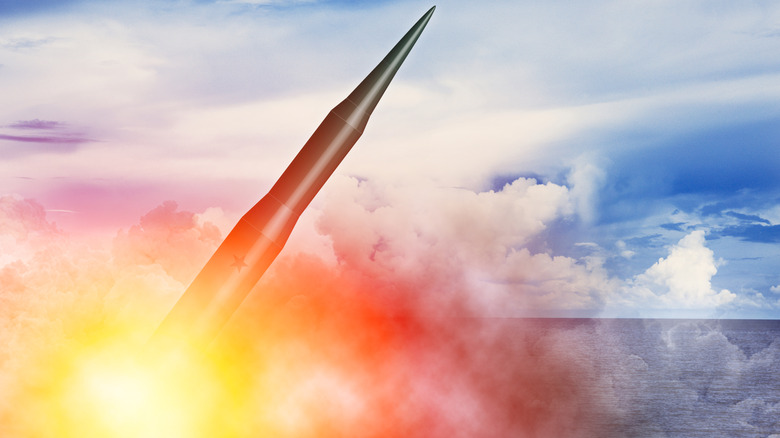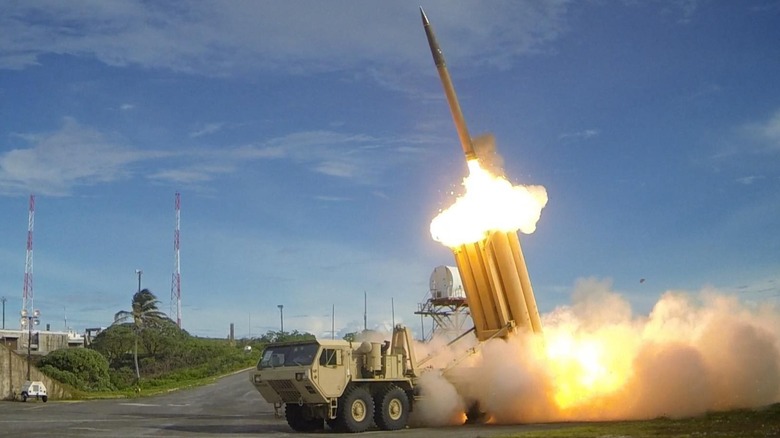Here's Why ICBMs Are So Hard To Shoot Down
President Donald Trump has announced plans for a so-called "Golden Dome," which would be a defensive shield for the continental United States. Ideally, the Golden Dome would function much like Israel's Iron Dome missile system, which uses a system of anti-missile batteries to intercept incoming missiles and destroy them before they reach their target. Because the U.S. is so far from potential hostile nations, the main concern is intercepting Intercontinental Ballistic Missiles (ICBM), which are often armed with nuclear warheads.
While a shield around the nation may seem desirable, it's not as easy as just ordering one and installing it. The technology required to intercept an ICBM is challenging to create and deploy because it's surprisingly difficult to shoot them down. This is because ICBMs aren't single objects in the sky; they're fired above the atmosphere and deploy a series of decoys. So, while a missile can potentially be intercepted, there's little chance of doing so after the missile releases its payload.
Numerous attempts have been made to develop a way of intercepting ICBMs, including the Terminal High Altitude Area Defense (THAAD). However, it took years for a successful operational interception, and it still can't stop ICBMs anyway. THAAD was designed to intercept short, medium, and intermediate-range ballistic missiles during their terminal phase, which is when the missile is making its atmospheric reentry. Even the famed Patriot Missile Air Defense System is incapable of intercepting an ICBM. So, for the moment, the Golden Dome is less a reality than it is a $175 billion pipe dream.
Why can't we shoot down an ICBM?
While it's not entirely effective, the U.S. does have a missile defense system protecting the homeland in THAAD, but its capability is limited. Shooting down a proper ICBM is challenging, as physicist Frederick Lamb of the University of Illinois explained: "Intercepting even a single, nuclear-armed intercontinental-range ballistic missile or its warheads ... is extremely challenging. The ability of any missile defense system to do this reliably has not been demonstrated."
This is because intercepting an ICBM has been described as "hitting a bullet with a bullet," which is not an easy thing to do. One problem is the great distances involved, as an interceptor would first have to climb some 3,100 miles to come close to its target. ICBMs are also incredibly fast, moving at around Mach 20.25 (15,534 mph). An ICBM's three phases of flight also increase difficulty, as it can release its warheads while in space, all while also discharging decoys. Interceptors would have to determine, possibly via onboard AI, which targets are worthy of destruction — which has its own technological hurdles to overcome.
It might be possible to take out an ICBM with a multitude of already airborne or spaceborne interceptors, but that's like hitting a speeding bullet with a very expensive shotgun blast. The U.S.'s current missile defense system focuses on a missile's midcourse phase when it jettisons its engines, but the system isn't 100% effective — not by a long shot. A missile's terminal phase, when it reenters the atmosphere, offers more possibilities for interception, but it happens in the comparative blink of an eye and leaves no margin for error. At the end of the day, the physics involved in taking out an ICBM are simply not currently within our grasp.

